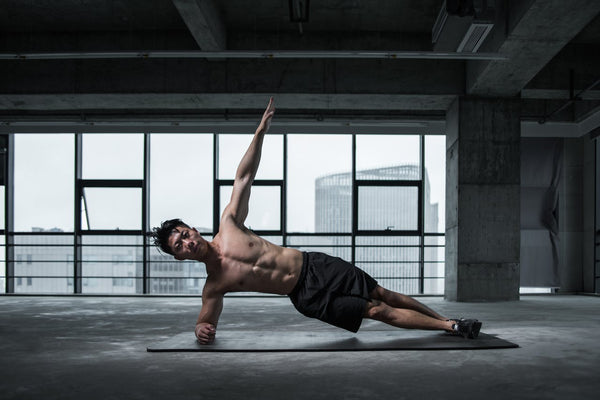Unlocking Your Full Athletic Potential: Understanding the Concept of Hybrid Athletes
In sports, where every fraction of a second and ounce of strength matter, athletes are constantly hunting for the next edge over the competition. Enter the hybrid athlete—an elite breed with a unique mix of talents that can seamlessly span multiple disciplines. Think of them as the Swiss Army knives of athletics, blending power, speed, agility, and endurance into a complete package capable of excelling across a variety of sports.
So, what exactly makes a hybrid athlete stand out? Imagine the strength of a powerlifter, the speed of a sprinter, the agility of a gymnast, and the stamina of a marathoner, all rolled into one athlete. This versatility allows them to transition smoothly between different sports, adapting and optimizing their training to excel in whatever challenge they face.
What separates hybrid athletes from their specialized counterparts? It’s their ability to cross physical domains and apply diverse skill sets across sports. This flexibility not only gives them a competitive advantage but also constantly pushes the limits of what the human body can achieve.
In this article, we’ll dive deep into the concept of hybrid athletes—why pursuing a hybrid approach can supercharge your performance, and how you can start unlocking your own full potential. Whether you’re a seasoned pro, a fitness enthusiast, or just looking to up your game, understanding the hybrid athlete mindset could be the key to taking your performance to the next level.
The Concept of Athleticism
At the core of any great athlete is athleticism—the broad set of physical traits like strength, speed, agility, and endurance that underpin performance. Traditionally, athletes have honed these attributes within the confines of a single sport. Hybrid athletes, however, challenge this convention, choosing instead to develop across multiple domains, creating a more balanced and complete athlete.
Exploring Different Athlete Types
Before jumping into what makes hybrid athletes tick, it’s helpful to first understand the other types of athletes. Specialized athletes dedicate their training entirely to excelling in one specific sport. Think of swimmers or marathon runners who build their entire regime around optimizing their skills for that one discipline.
In contrast, multi-sport athletes participate in several sports, often competing in different seasons or balancing two simultaneously. These athletes thrive on the diversity and variety, excelling in multiple areas without focusing solely on one.
What Defines a Hybrid Athlete?
Hybrid athletes blend the best of both worlds—the depth of a specialized athlete with the versatility of a multi-sport competitor. Their hallmark is adaptability. Whether it’s a 10K race, a CrossFit competition, or a weightlifting meet, a hybrid athlete can train and perform in a variety of settings with impressive results.
Unlike athletes bound by the demands of one sport, hybrid athletes develop skills across a wide array of physical tasks. This adaptability is a major asset, allowing them to seamlessly switch between disciplines while maintaining peak performance.
The Benefits of Being a Hybrid Athlete
The advantages of being a hybrid athlete are numerous. First, training across multiple sports creates a more well-rounded and balanced athlete. This diversity in training helps reduce the risk of overuse injuries that are common in single-sport athletes while keeping overall fitness levels high.
Hybrid athletes are also incredibly adaptable. They can easily adjust to varying challenges, whether that’s changing terrain, competition strategy, or unique physical demands. Additionally, having the ability to transfer skills between sports means they can leverage their strengths in new ways, often outperforming more specialized competitors.
Training Methods for Hybrid Athletes
For hybrid athletes, training is a delicate balancing act. You need to develop specialized skills in each sport while maintaining a high level of overall athleticism. Here are some key training principles for hybrid athletes:
-
Cross-training: Engaging in a variety of physical activities helps build a more comprehensive skill set and prevents overtraining in any one area. For example, mixing swimming, cycling, and weightlifting provides a robust foundation for a hybrid athlete.
-
Periodization: Structuring training into distinct phases allows for focused development of specific skills without overloading the body. For example, focusing on strength in one phase, endurance in the next, and agility thereafter.
-
Functional training: Exercises that mimic the movements and demands of multiple sports help ensure that training transfers to real-world competition. Movements like kettlebell swings, Olympic lifts, and agility drills fit the bill.
-
Mental conditioning: Being adaptable isn’t just physical. Hybrid athletes also train their minds, using techniques like visualization, mindfulness, and even tactical decision-making to stay mentally sharp across various sports.
Nutrition and Recovery for Hybrid Athletes
To sustain high performance across multiple disciplines, hybrid athletes need top-tier nutrition and recovery strategies. Key considerations include:
-
Balanced diet: Focus on whole foods rich in macronutrients and micronutrients, ensuring you’re fueling both strength and endurance training demands.
-
Hydration: Staying well-hydrated is key for performance and recovery. Dehydration can affect cognitive function and physical endurance, so make sure you’re sipping water consistently.
-
Recovery protocols: Regular use of foam rolling, stretching, and mobility work can help keep your body primed for the next workout. Adequate sleep, often overlooked, is also crucial for muscle recovery and mental sharpness.
Famous Hybrid Athletes
Hybrid athletes aren’t just theoretical; some of the greatest athletes in history have thrived in multiple domains. Bo Jackson, for instance, became a legend by excelling in both professional baseball and football. His incredible athleticism allowed him to dominate two very different sports, cementing his place as one of the ultimate hybrid athletes.
Ashton Eaton, Olympic gold medalist in the decathlon, is another standout example. Competing in 10 events that span across sprints, long jumps, pole vaults, and throwing events, Eaton’s versatility and all-around skill set made him a hybrid athlete of the highest caliber.
How to Become a Hybrid Athlete
The path to becoming a hybrid athlete starts with a shift in mindset and commitment to developing a broad range of physical skills. Here’s how to begin:
-
Assess your strengths and weaknesses: Pinpoint where you excel and what areas need improvement. Knowing this will help you design a well-rounded training plan.
-
Set specific goals: Establish clear goals for each sport or discipline. Whether it’s improving sprint speed, building strength, or enhancing endurance, having measurable objectives will keep you on track.
-
Seek expert guidance: Coaches and trainers with experience across multiple sports can offer invaluable insights on how to best structure your hybrid training regimen.
-
Consistency is key: Stick to your training plan and don’t shy away from challenging yourself. Recovery, nutrition, and mental training are just as important as physical training.
Conclusion: Embracing the Hybrid Athlete Mindset
The concept of hybrid athletes is changing how we view athletic potential. By embracing the versatility and adaptability that comes with hybrid training, you can tap into a wider range of physical abilities and push your limits further than ever before.


